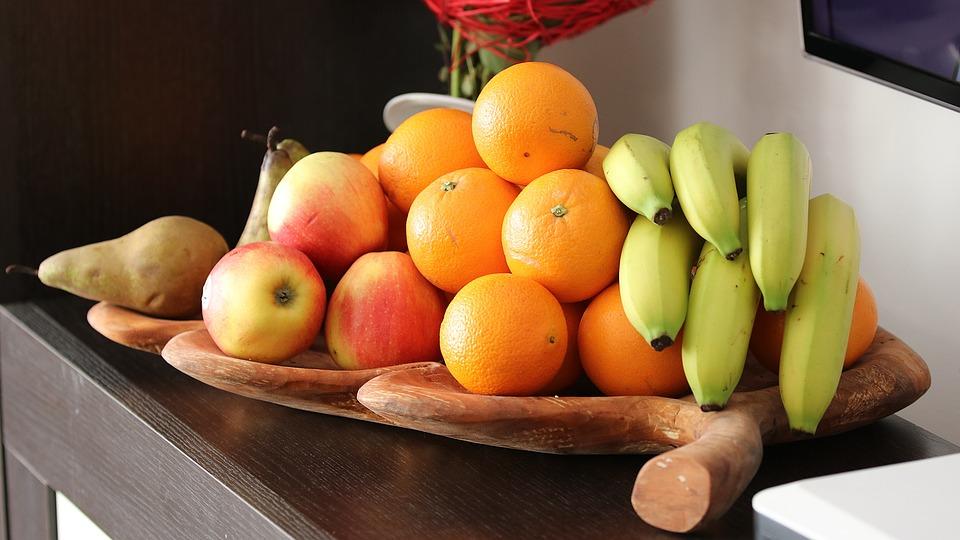You are here
Back to topChina’s Fruit Imports Showed Steady Growth in First 10 Months of 2019

Imports
According to a recent report released by the China Chamber of Commerce for the Import and Export of Foodstuffs, Native Produce and Animal By-products (CFNA), between January and October 2019, China imported a total of 5.99 million metric tons of fruit with a combined value of $8.34 billion, representing increases of 28% and 26%, respectively, over the same period last year. In October alone, China imported 366,000 tons of fruit worth $370 million, decreases of 3% and 2%, respectively, compared with last year.
The top nine categories of imported fruits between January and October were as follows:
- Durian ($1.54 billion, +50% from last year)
- Cherries ($1.03 billion, −1%)
- Bananas ($930 million, +32%)
- Mangosteens ($780 million, +140%)
- Grapes ($630 million, +14%)
- Oranges ($394 million, −8%)
- Kiwifruit ($388 million, +4%)
- Dragon fruit ($310 million, −11%)
- Longan ($310 million, +11%)
Imports of these nine major categories accounted for 76% of total imports.
Cherries
Between January and October, China imported 150,000 tons of cherries, a decrease of 4% from last year. The main exporters of cherries to China were Chile (129,000 tons, −4% from last year) and the U.S. (14,000 tons, −2%). Imports from these two countries accounted for 95% of total imports.
According to the Chilean Fruit Exporters Association (ASOEX), the start of Chile’s 2019/20 cherry season was later than expected, although global exports for the whole season are forecast to increase to a new record of 210,000 tons, up 16.7% from last season’s 180,000 tons.
On Dec. 6, this season’s first sea shipment of Chilean cherries arrived in Hong Kong, and exports to the Chinese market are now approaching their peak period.
Bananas
Between January and October, China imported 1.63 million tons of bananas, up 34% from last year. The main source countries for bananas were the Philippines (870,000 tons, +10% from last year), Ecuador (392,000 tons, +122%) and Vietnam (235,000 tons, +98%). Imports from these three countries accounted for 92% of total imports.
China’s imports of bananas from Southeast Asia and South America have been increasing owing to the limited banana cultivation area available domestically, coupled with the impact of banana leaf disease. According to customs data, in 2018 China imported a total of 1.54 million tons of bananas, which has already been surpassed in the first 10 months of this year.
Mangosteens
Between January and October, China imported 361,000 tons of mangosteens, an increase of 140% from last year. The main source countries for mangosteens were Thailand (339,000 tons, +133% from last year), Indonesia (18,000 tons, +650%) and Malaysia (4,000 tons, +73%).
Thai mangosteens are predominantly transported to China by road and can be found in cities along the eastern coast within 5–6 days of picking.
Oranges
Between January and October, China imported 427,000 tons of oranges, up 12% from last year. The main source countries for China’s oranges were Egypt (191,000 tons, +107% from last year), South Africa (113,000 tons, −18%), Australia (50,000 tons, −17%), Spain (42,000 tons, +52%) and the U.S. (29,000 tons, −52%). Imports from these five countries accounted for 99.6% of total orange imports.
Kiwifruit
Between January and October, China imported 110,000 tons of kiwifruit, an increase of 10% from last year. The main exporters of kiwifruit to China were New Zealand (83,000 tons, −4% from last year) and Chile (21,000 tons, −33%). These two countries accounted for 94% of total imports.
In recent years, the Chilean Kiwifruit Committee has developed a “ripeness guarantee plan” to facilitate the distribution of higher quality kiwifruit to international markets.
Exports
From January to October 2019, China exported 2.48 million tons of fruit, a 3% decrease over the same period of last year. Export values totaled $3.83 billion, an 8% year-on-year increase. In October alone, China exported 495,000 tons of fruit worth $760 million, decreases of 31% and 35%, respectively, compared with last year.
The top eight categories of exported fruits between January and October were as follows:
- Apples ($840 million, −19% from last year)
- Grapes ($710 million, +32%)
- Cherries ($440 million, −2%)
- Citrus (including mandarin oranges and satsuma oranges; $430 million, −4%)
- Peaches (including nectarines; $200 million, +118%)
- Other fruits ($160 million, +86%)
- Grapefruit (including pomelos; $130 million, +13%)
- Lemons and limes ($110 million, +39%)
Exports of these eight major categories accounted for 78% of total exports.
Apples
Between January and October, China exported 638,000 tons of apples, down 29% from last year. The main export destinations were Vietnam (77,000 tons, +10% from last year), Indonesia (78,000 tons, −19%), Bangladesh (114,000 tons, +1%), Thailand (57,000 tons, −28%) and the Philippines (59,000 tons, −29%). These five countries accounted for 60% of China’s apple exports.
Owing to a sharp decline in production last season, China’s apples were in short supply this spring, thereby driving up the price. By July of this year, the wholesale and retail prices of apples had soared to their highest levels in nearly a decade. As Chinese apples are exported mainly to South Asian and Southeast Asian markets, consumers in these regions are generally more affected by price changes. These price fluctuations have a knock-on effect on exports.
Pears
Between January and October, China exported 345,000 tons of pears, down 17% from last year. The main export destinations were Vietnam (80,000 tons, +33% from last year), Indonesia (115,000 tons, −23%), Thailand (31,000 tons, −25%), Malaysia (24,000 tons, −15%) and the Philippines (19,000 tons, −12%). These five countries accounted for 78% of China’s total pear exports.
Owing to a combination of extreme weather in April and July 2018, which led to a severe decline in pear production last year, and a general decline in the pear market over the last few years, the land area used for pear tree cultivation has shrunk, ultimately causing a nationwide shortage.
Citrus (including mandarin and satsuma oranges)
Between January and October, China exported 327,000 tons of oranges, up 9% from last year. The main export destinations were Vietnam (89,000 tons, +18% from last year), Malaysia (45,000 tons, −14%), Indonesia (30,000 tons, +312%), Myanmar (31,000 tons, +5%), Thailand (21,000 tons, −35%) and Russia (29,000 tons, +16%). These six countries accounted for 75% of China’s total citrus exports.
Image: Pixabay
This article was translated from Chinese. Read the original article.













